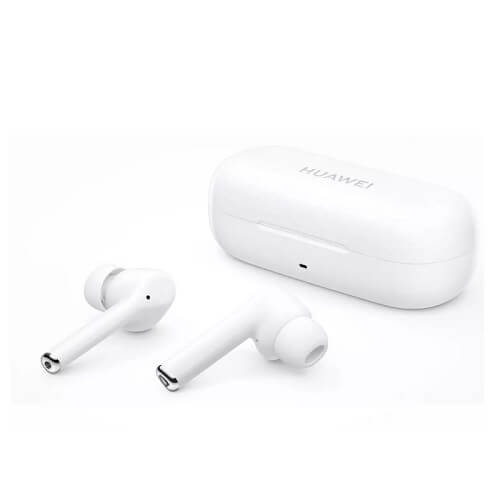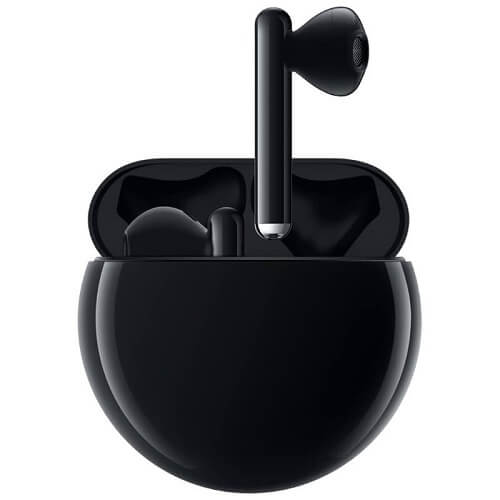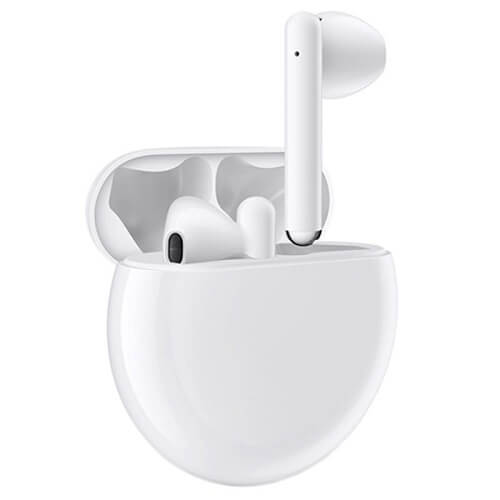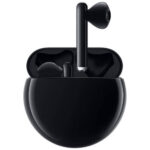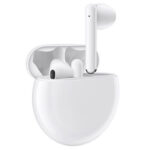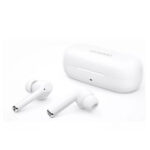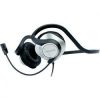HUAWEI FreeBuds 4 in kenya
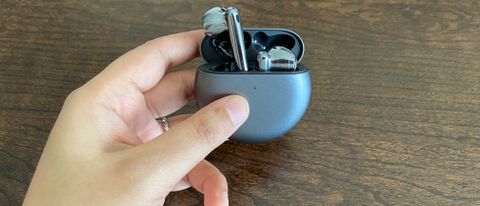
OUR VERDICT
The Huawei FreeBuds 4 are a decent choice if you’re looking for open-fit earbuds that don’t cram in your ears. They’re feature-packed and the ability to control volume by sliding up and down is a welcome addition. If you’re in the market for decent AirPods alternatives, these are worth considering. However, open-fit buds come with their fair share of caveats and just as the case with AirPods, you’ll be better off with the Pro model.
FOR
- Comfy design
- Good sound quality
- Volume controls on stem
AGAINST
- Average battery life
- Poor ANC
- Not loud enough
Two-minute review
Huawei’s latest FreeBuds 4 look similar to their predecessor and bring a host of improvements across the board including multi-device connectivity, volume touch controls on the stem, and upgraded drivers for enhanced sound quality as well as support for high resolution audio.
They sport a familiar open-fit design that’s lightweight and spacious, appealing to those who don’t want to jam silicone tips in their ears. And though open-fit buds don’t offer a solid seal around your ear like their in-ear counterparts, Huawei’s banking on its dual-microphone ANC technology to compensate for that by using the extra mics to pick up outside noise and block it out.
To aid passive noise reduction ANC, Huawei’s tacked on Adaptive Ear Matching tech to detect a user’s ear shape and optimize noise cancellation accordingly. It sounds impressive on paper but doesn’t work like you’d want it to. Not everyone will get similar results, which largely depend on how well the FreeBuds 4 sit in your ears.
PLAY SOUND
Given the compact form factor of the FreeBuds 4, the battery stamina is on the lower end. The buds last around 4 hours on a single charge and can be extended to 22 hours with the charging case. Those who like long listening sessions and expect their earbuds to get them through the better part of the day, will be disappointed.
As nice as it is to see decent open-fit earbud choices on the market, we’re not convinced they hold up to their in-ear counterparts that provide better sound isolation and audio quality at more or less the same price. That being said, the FreeBuds 4 do pack appealing features like a much comfier fit, the ability to connect to two devices simultaneously, and touch volume controls. Whether that’s enough to compromise on sound quality will be a matter of individual preference.
For us, the comfier open-fit design compromises too much on quality to make us recommend them over in-ear alternatives. If sound quality and decent noise cancellation is what you’re after, both the cheaper FreeBuds 4i and slightly more expensive FreeBuds 4 Pro are great options that trump the FreeBuds 4 on sound quality and battery life.
Price and availability
You’ll be able to buy it mid-August in the UAE across Huawei experience stories and select online retailers. They come in two color variants: the classic Ceramic White and Silver Frost, which comes with a matte grey finish on the charging case and glossy buds. The FreeBuds 4 are priced at AED 569, which is slightly more expensive than we’d thought they would be. This puts them right against the more premium and better sounding FreeBuds Pro and slightly more expensive than the 2nd-gen Apple AirPods.
Design & Fit
Like the previous generation, the FreeBuds 4 sport the same AirPods-like design following the philosophy of ‘one size fits all’. They’re almost identical to the FreeBuds 3 except they have longer stems and feel much lighter without feeling cheap or flimsy.
With an open-fit design that sits just outside our ear canal the FreeBuds 4 don’t feel as invasive as in-ear buds and can be worn for longer sessions without getting uncomfortable. The curves around the earpieces are refined and feel premium, and their glossy finish feels pleasant against skin.

These don’t have as tight of a grip that in-ear buds do, but manage to stay put during light movements. You’ll be able to wear them without worry for light strolls and jogs, though anything more vigorous and you risk them falling out. They’re also IPX4 rated, so they’ll be able to handle a small splash of water. The lack of grip also means no seal around your ears to aid passive sound isolation, meaning external noises intrude and spoil immersion.

The puck-shaped charging case has gotten slimmer and lighter as well. It sits nicely in the palm of your hand and is barely noticeable when slipped into a pocket. It has a lone button on the side that’s used for initiating pairing and a USB-C port at the bottom.
Features
The longer stems on the FreeBuds 4 support gesture touch controls that are responsive and work like a charm. A welcome addition is the ability to control volume by sliding up and down the stem. Unlike previous FreeBuds where touch controls were finicky, the upgraded controls on the FreeBuds 4 respond to finger taps more accurately, and we found ourselves using them more often than having to control the earbuds through a device. You can remap gestures to something else or make more tweaks via the Huawei AI Life app – available on both Android and iOS.

If you have a Huawei device the pairing process is initiated by simply popping the case open near the device and tapping the pairing prompt. Much like how AirPods work with iPhones, each time you prop the case open near your Huawei device, you’ll see a snapshot of the battery status of both earbuds and the charging case.
For all other devices, pairing begins by long pressing the button on the FreeBuds 4 case. You can connect up to two devices simultaneously and it’s a marked improvement from the erratic connections of previous FreeBuds. If you connect to a laptop and a phone, the FreeBuds 4 will prioritize connections from your phone to patch through calls swiftly. When you’re done with a call and resume media playback on your laptop, the buds are quick to switch back to the laptop and maintain a stable connection throughout.

You can use the Huawei AI Life app to see battery status, manage device connections, toggle ANC on and off and choose between a couple of audio modes. You can’t fine tune audio with a detailed EQ visualizer but you can boost either treble or bass depending on what you’re listening to, with mixed results.
Audio Performance
The FreeBuds 4 can handle most popular genres and simple mix of frequencies well enough. There’s more emphasis on mids and vocals, which sound crisp and you get detailed instrumental harmonics. Lower-end frequencies and bass still come through, but they’re not as prominent and struggle to get you into the groove of a track. You can boost bass or treble through the Huawei AI Life app, and while it enhances audio a little bit, other frequencies get overpowered.
Playing Staryboy by The Weeknd, the FreeBuds 4 did well to deliver that weighty pulsating bassline while retaining vocal clarity. More complex mixes like Revelry by Kings of Leon end up getting muddied, and nuanced orchestral tracks don’t land as dramatically as they should.

Since the earbuds don’t form any kind of seal around the ear, the most you’ll get out of the FreeBuds 4 is moderate noise reduction. It’s helpful for those who like to keep tabs on their surroundings but not so great when you want to immerse yourself in a track, video, or podcast.
One area they come in handy is when taking calls or using them as a mic to record a vlog from your phone. The FreeBuds 4 do a good job at isolating your voice from ambient noise around you and make sure you sound clear. However, if you want high-quality noise-cancellation you’ll be better off going for in-ear earbuds like the Huawei FreeBuds Pro or save up for premium noise-cancelling buds from Sony or Bose.
Battery Life
The FreeBuds 4 last around 3.5 to 4 hours on a single charge and if you pop them back in their case a few times, you can get another 22 hours. This is by no means ground-breaking as similarly priced wireless buds get you around 6-7 hours. When you turn ANC on, the FreeBuds stamina is reduced to 2 – 2.5 hours. Considering the ANC isn’t all that noticeable, we suggest keeping it off.
We listened to the Freebuds 4 mostly at max volume to get the best experience. This yielded around 3 hours of battery endurance before we had to plop them back in the charging case, where the buds take around an hour to top up. It’s enough to take a few quick calls or listen to a quick playlist and podcasts but if you want settle in for a long listening session you’ll be frustrated
The case charges via a USB-C cable and also takes around an hour to fully recharge. There’s no wireless charging support, which is disappointing given how expensive the FreeBuds 4 are.
Should you buy the Huawei FreeBuds 4?

Buy them if…
You prefer open-fit design
In-ear buds aren’t for everyone and if you’re one of those who don’t like silicone tips jamming in your ears then the FreeBuds 4 are a decent option. Their compact design and lightweight build mean they sit dainty in your ears to a point where you forget you’re wearing them.
You want earbuds that you can reliably use for calls
Having a reliable pair of earbuds for video calls is always handy and the mics on FreeBuds 4 do well to isolate your voice and ensure you sound clear to those on the other end. It’s also decent for recording notes to yourself or if you need a mic to record a quick vlog.
You like no-fuss connectivity and touch controls
The FreeBuds 4 are super easy to pair to multiple devices and can be connected to two devices simultaneously. Once paired they retain a stable connection and switch between devices with little to no trouble. The touch gestures are responsive and are great at rejecting accidental input.
Don’t buy them if…
You want high quality noise cancellation
Lack of proper seal around the ears and not enough volume mean the FreeBuds 4 won’t give you an isolated sound experience. If you want to block out the outside world you’ll be better off with in-ear buds like the Huawei FreeBuds Pro or Apple AirPods Pro.
You listen to music at high volume
If you like to immerse yourself in what you’re listening to, the FreeBuds 4 will disappoint. Unless you’re in a bubble or silent surroundings, the FreeBuds 4 just don’t get loud enough to block out ambient noise. The AirPods 2 and every other in-ear alternative fare better in this regard.
Earbuds for fitness and sports
The FreeBuds 4 are comfy but their airy fit means they’ll plop right out if you move around vigorously or bop a little too eagerly to your favorite tunes

